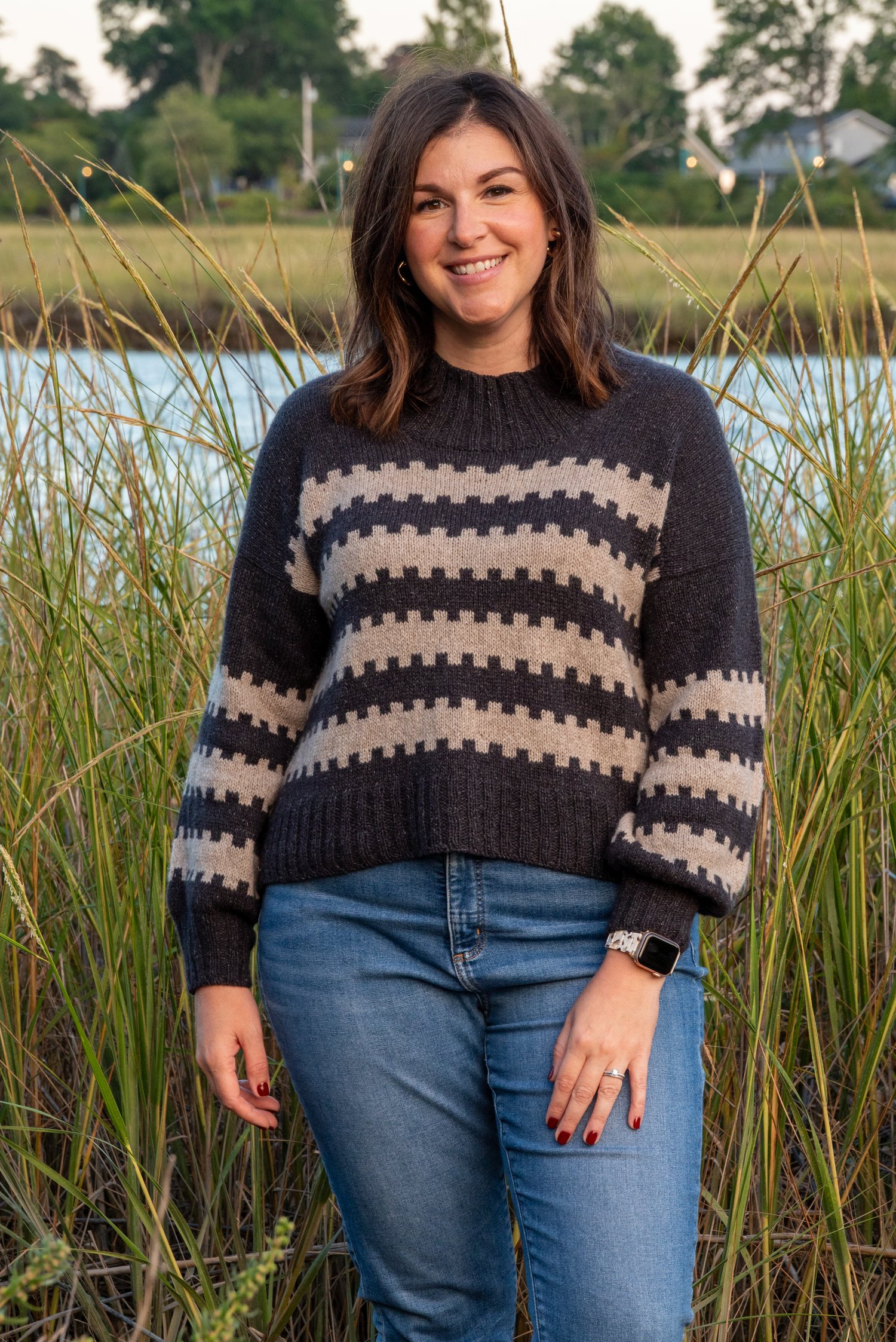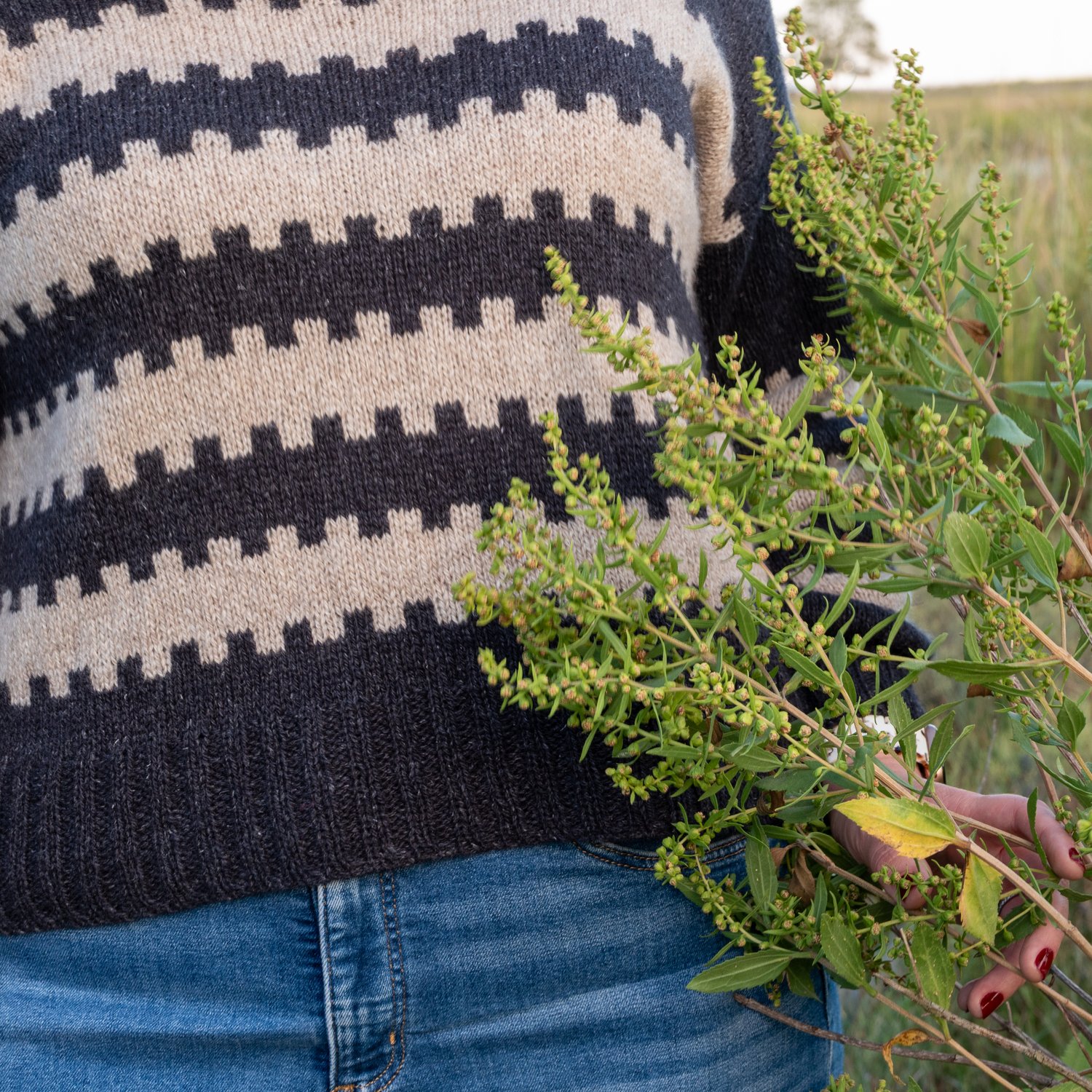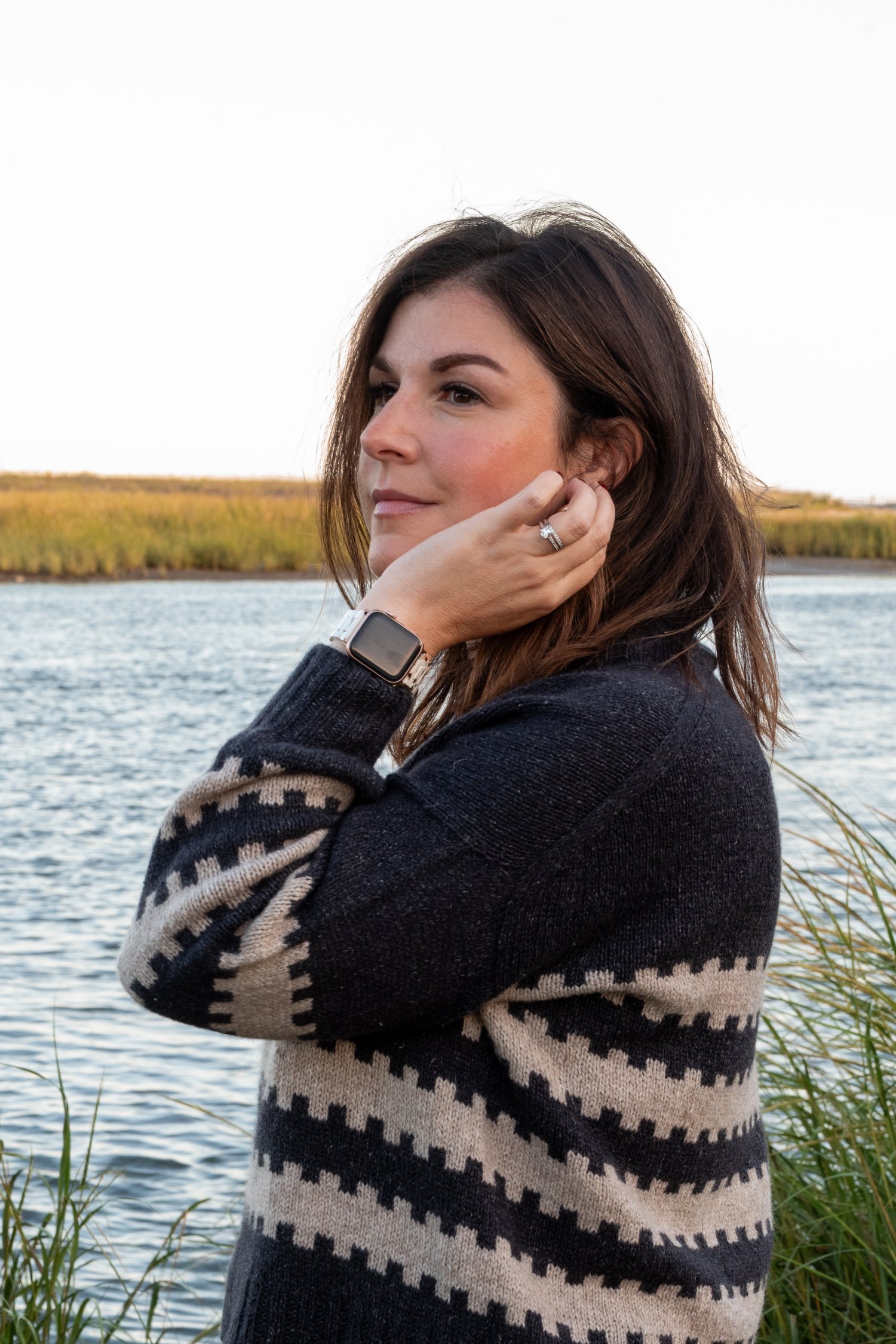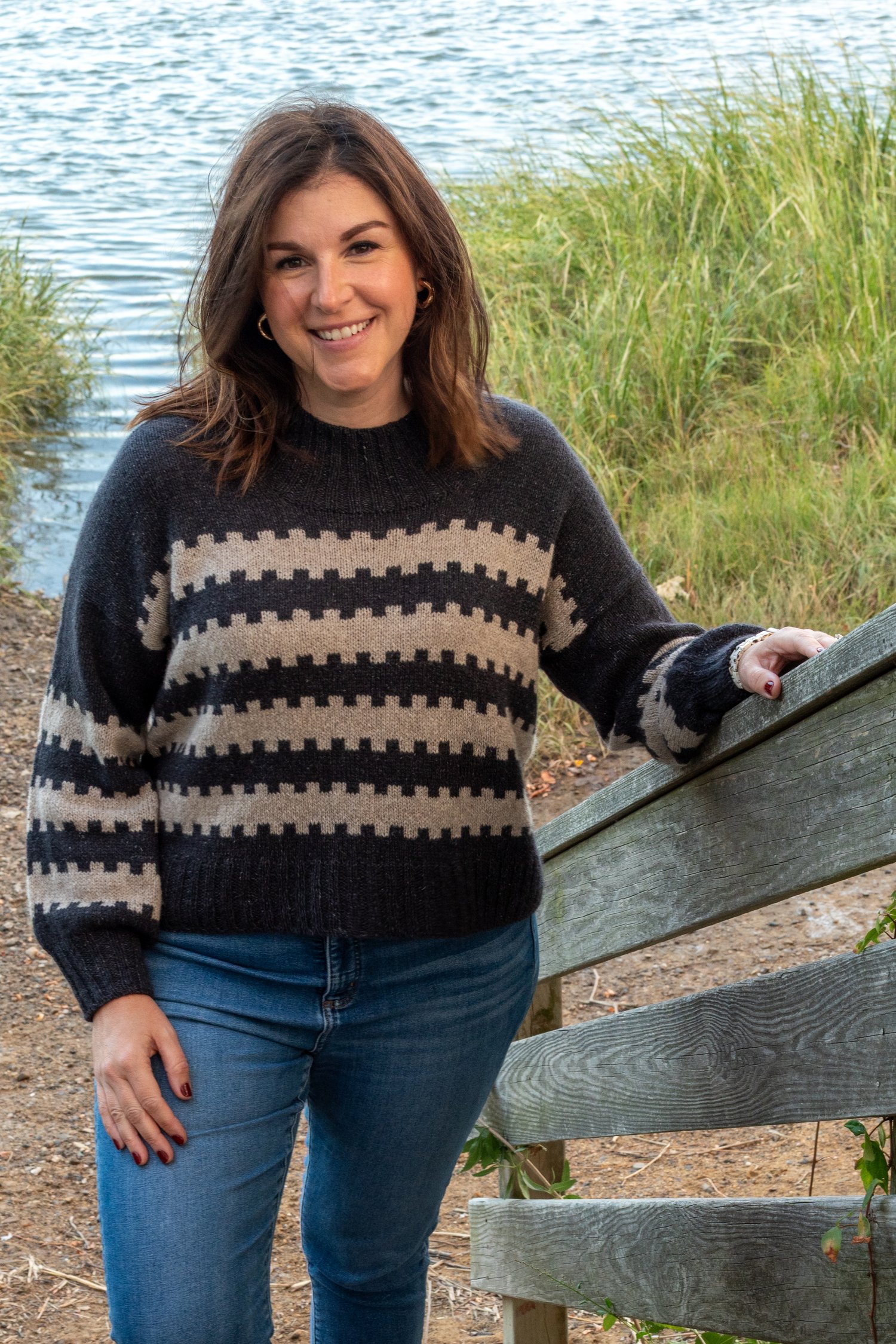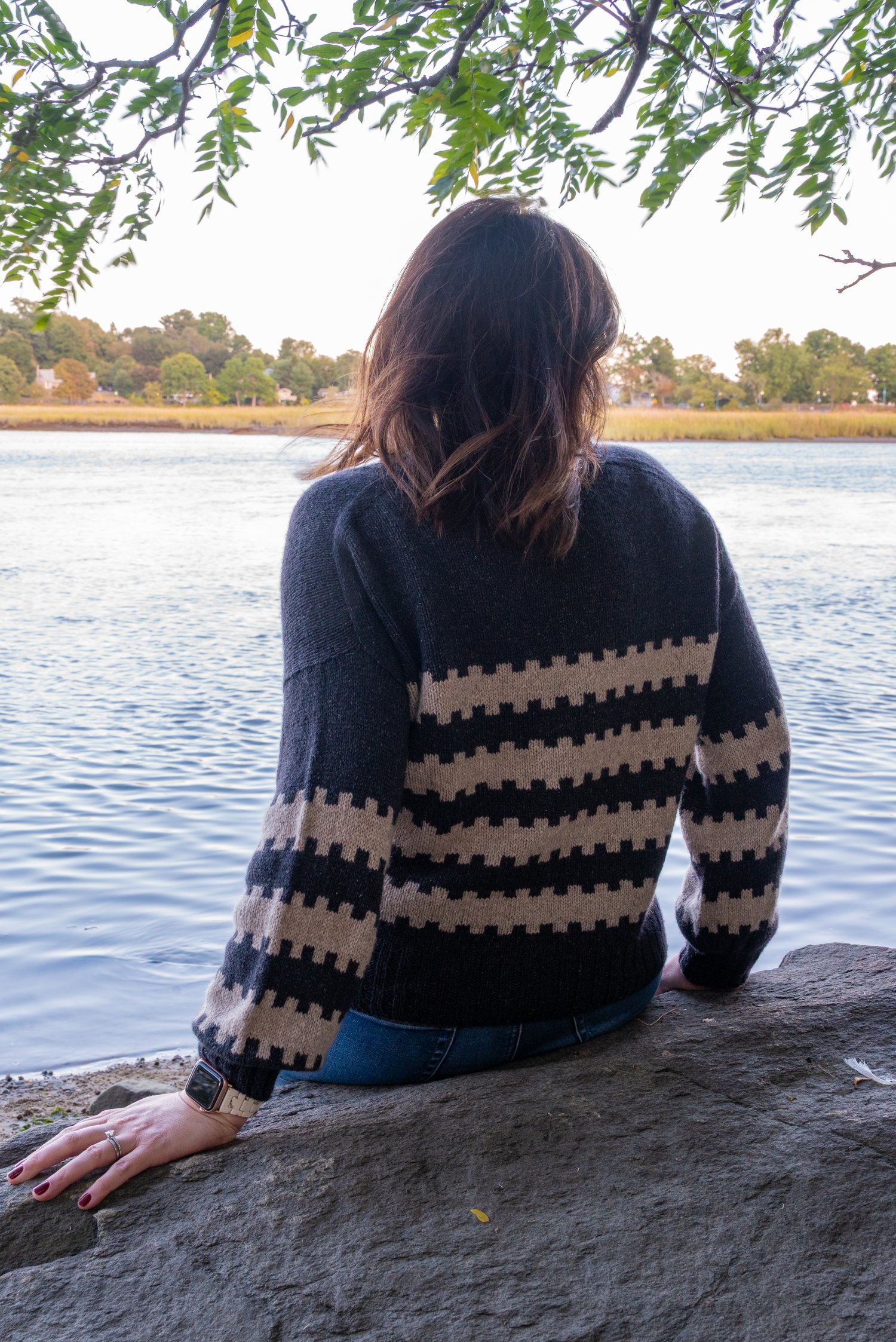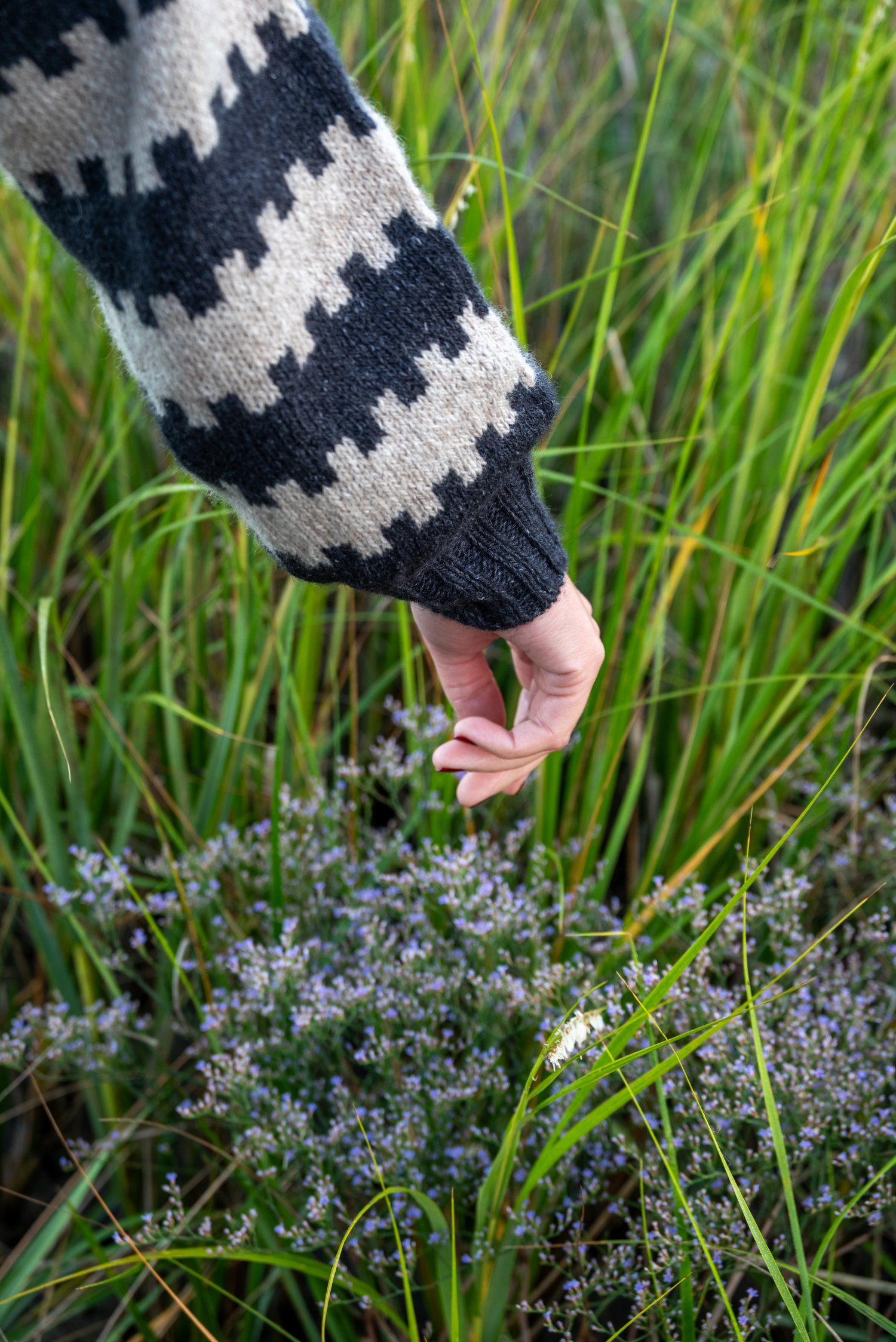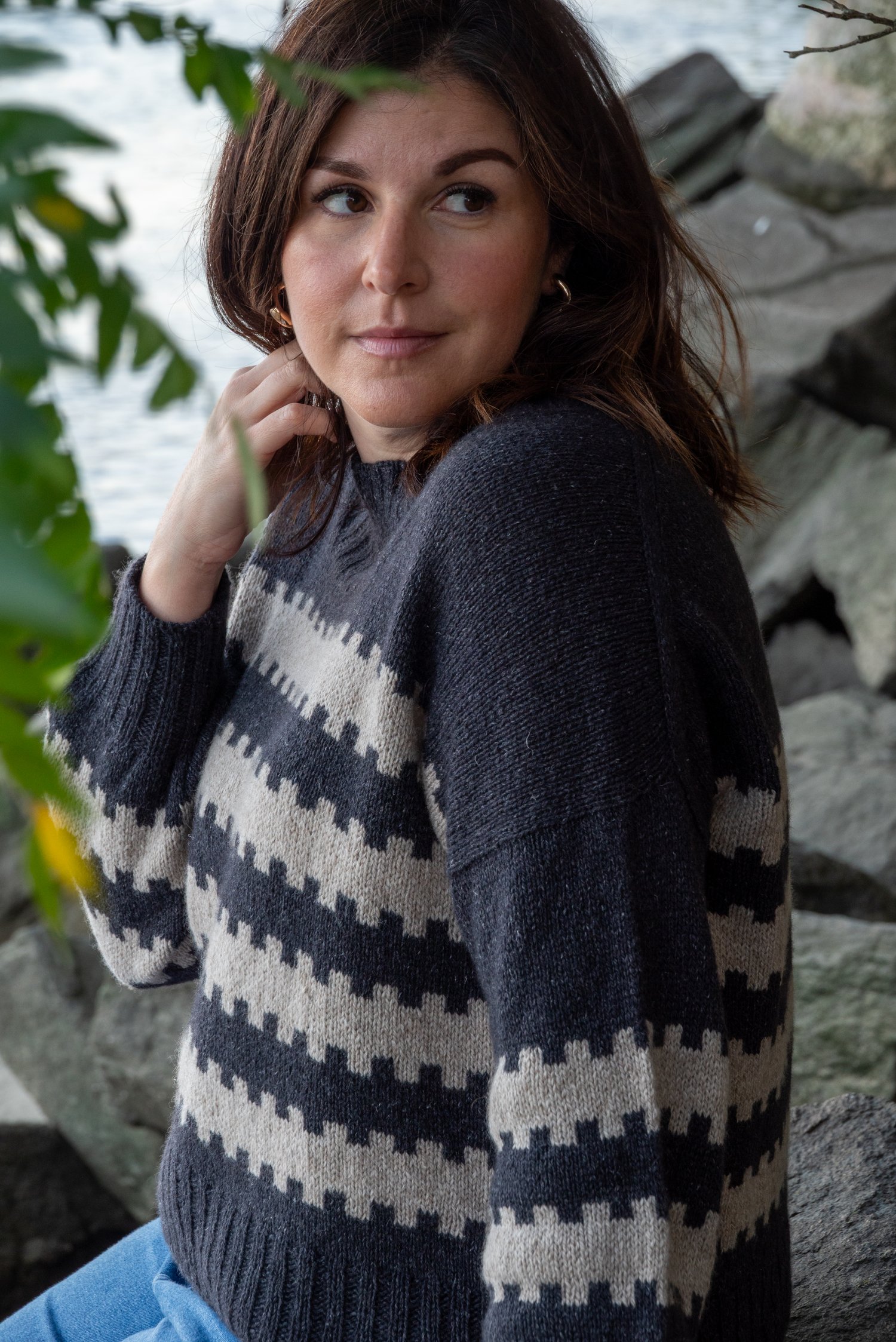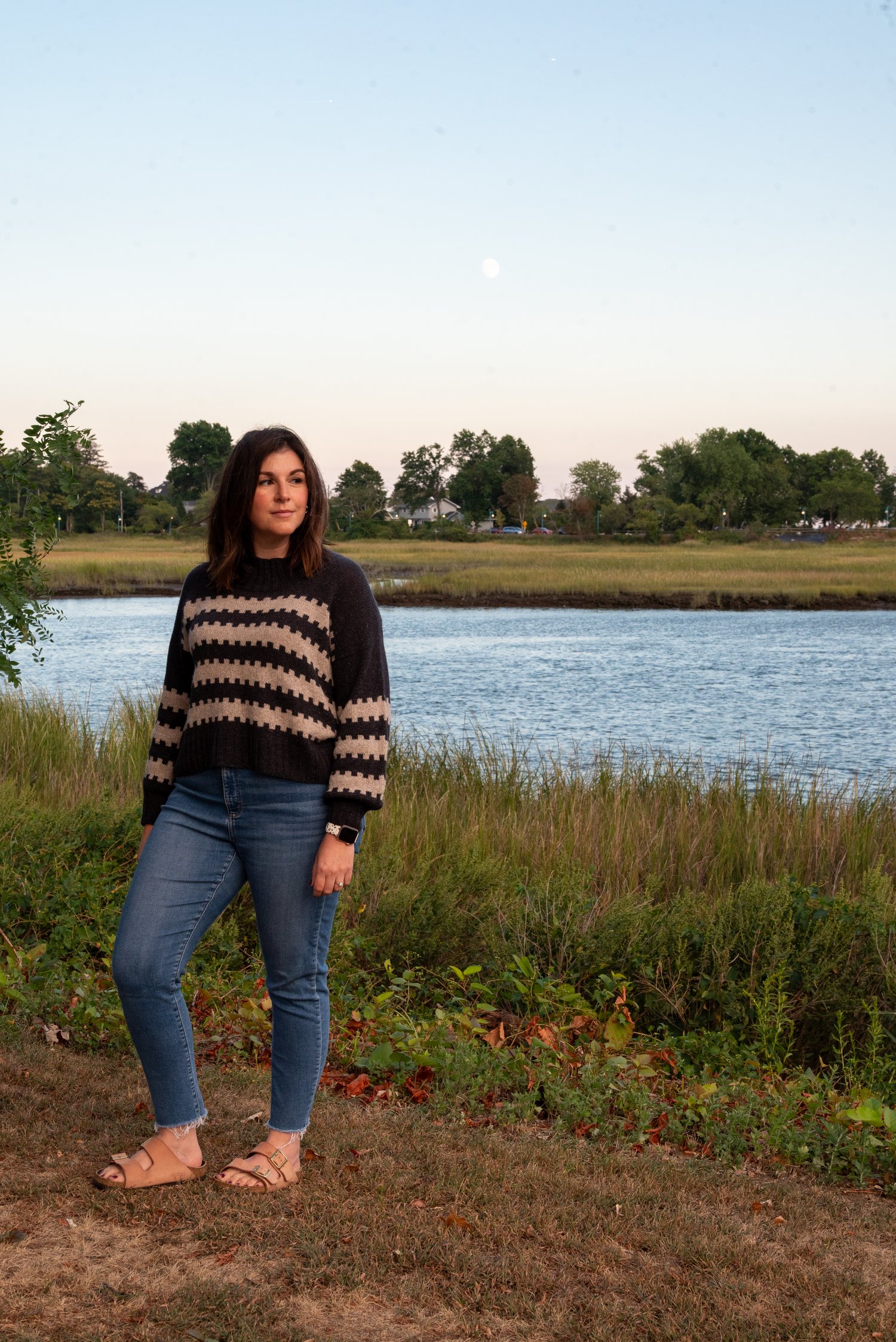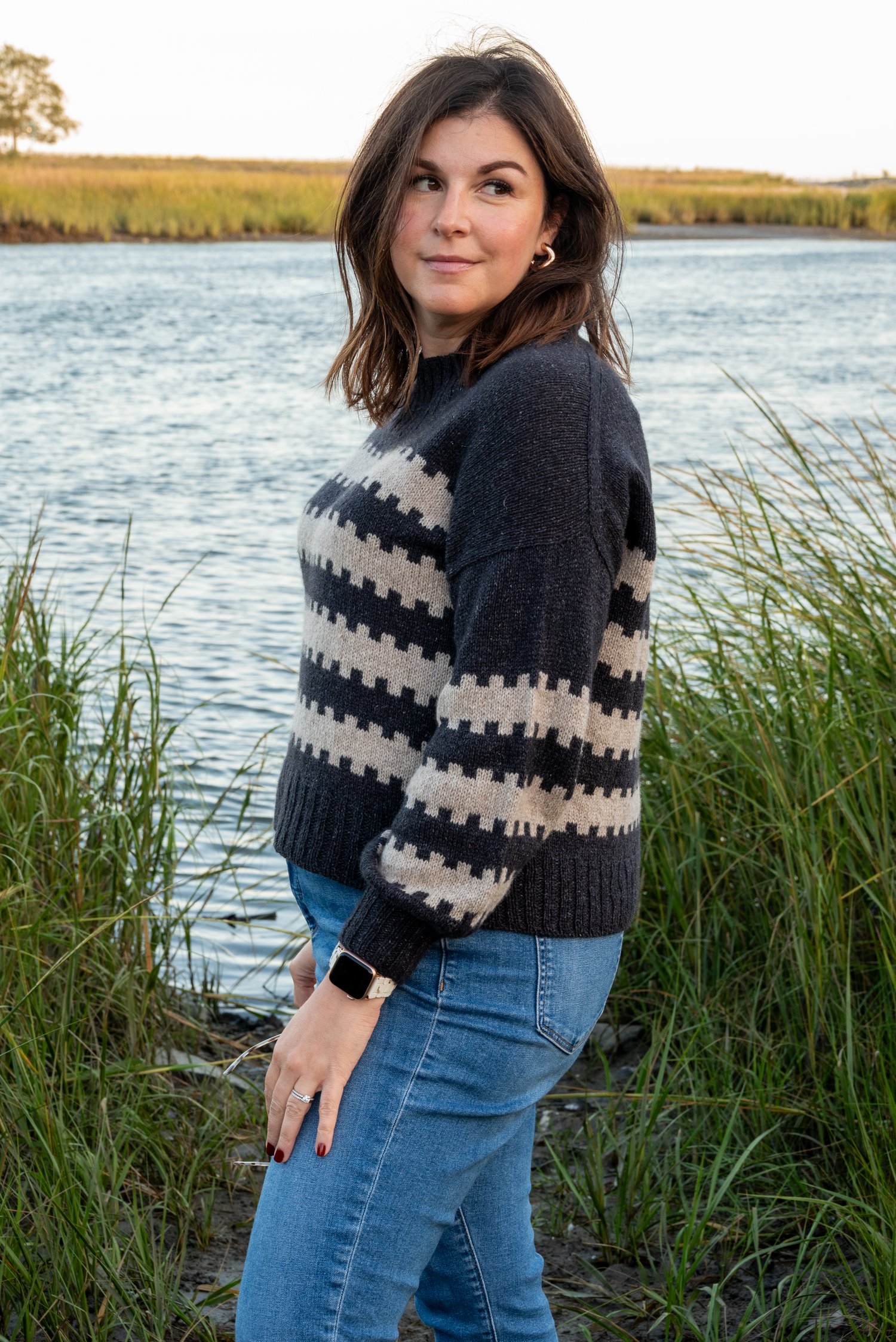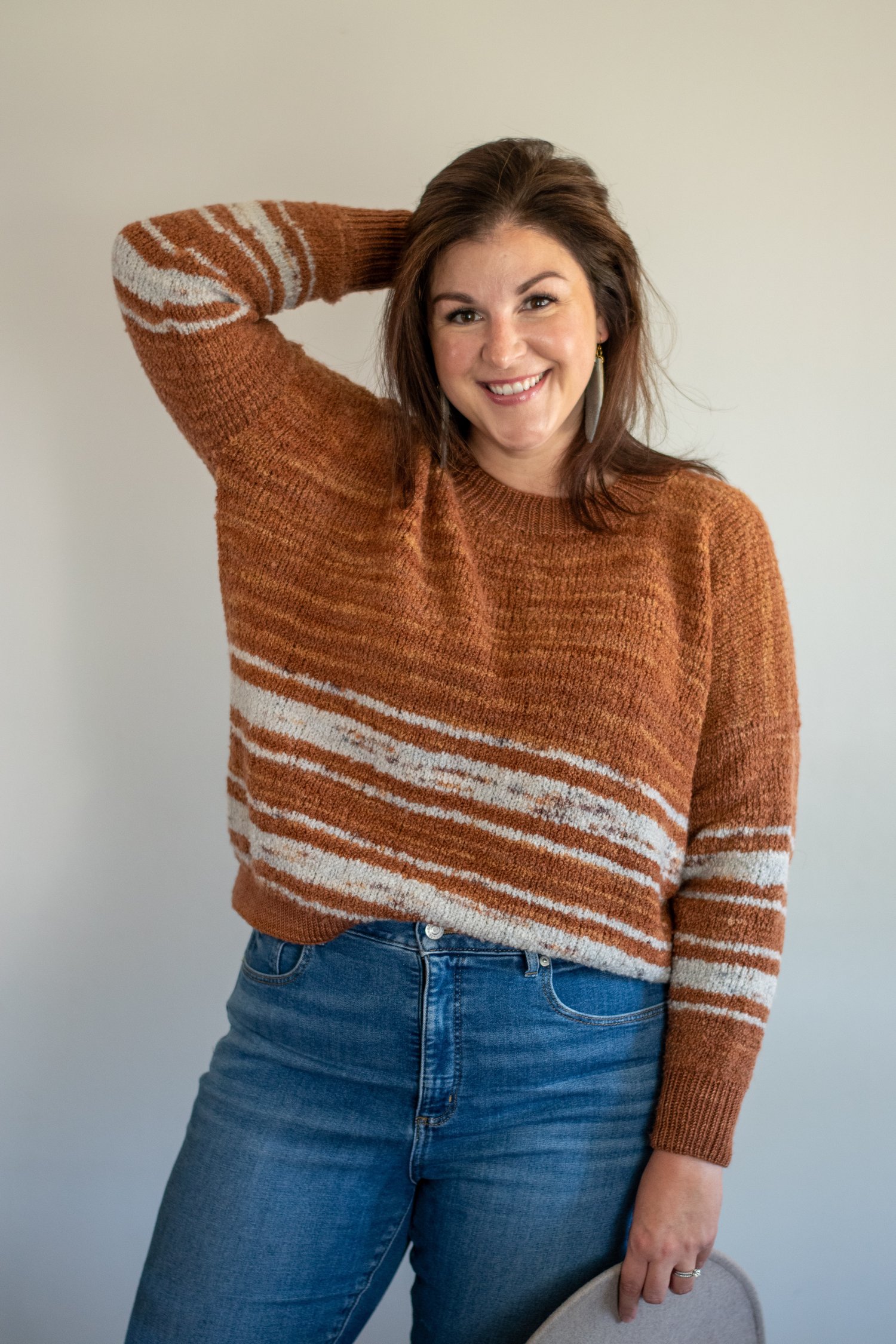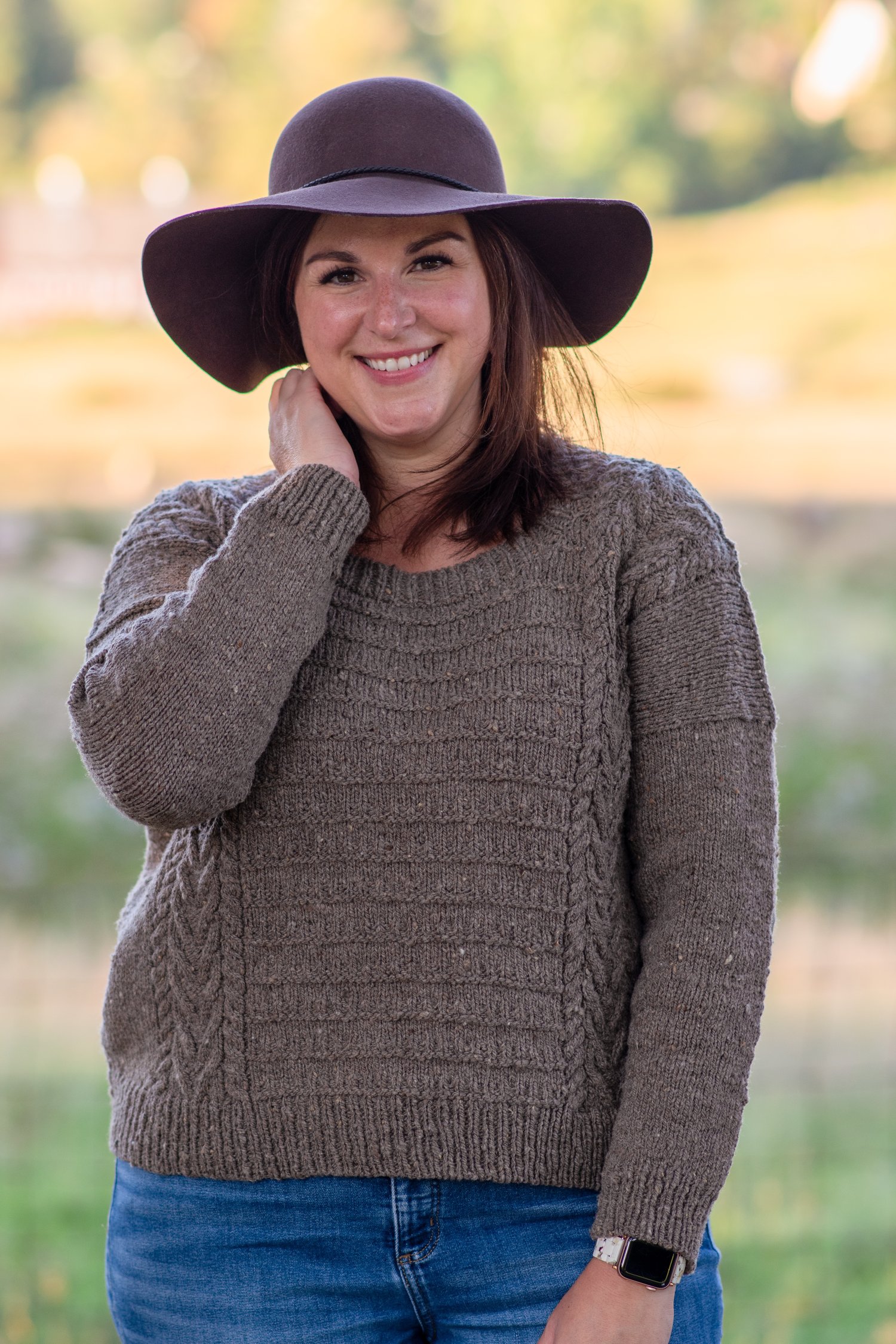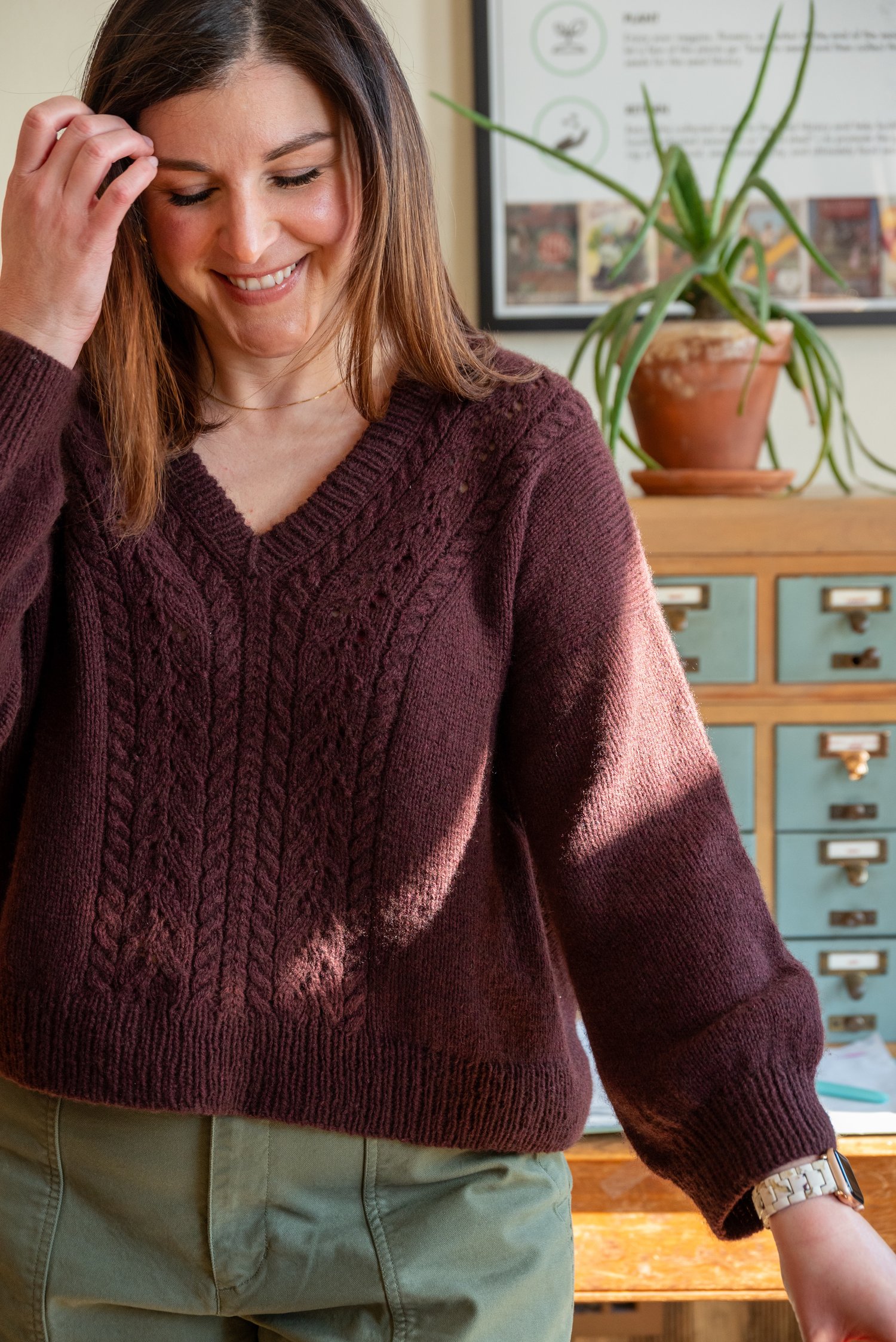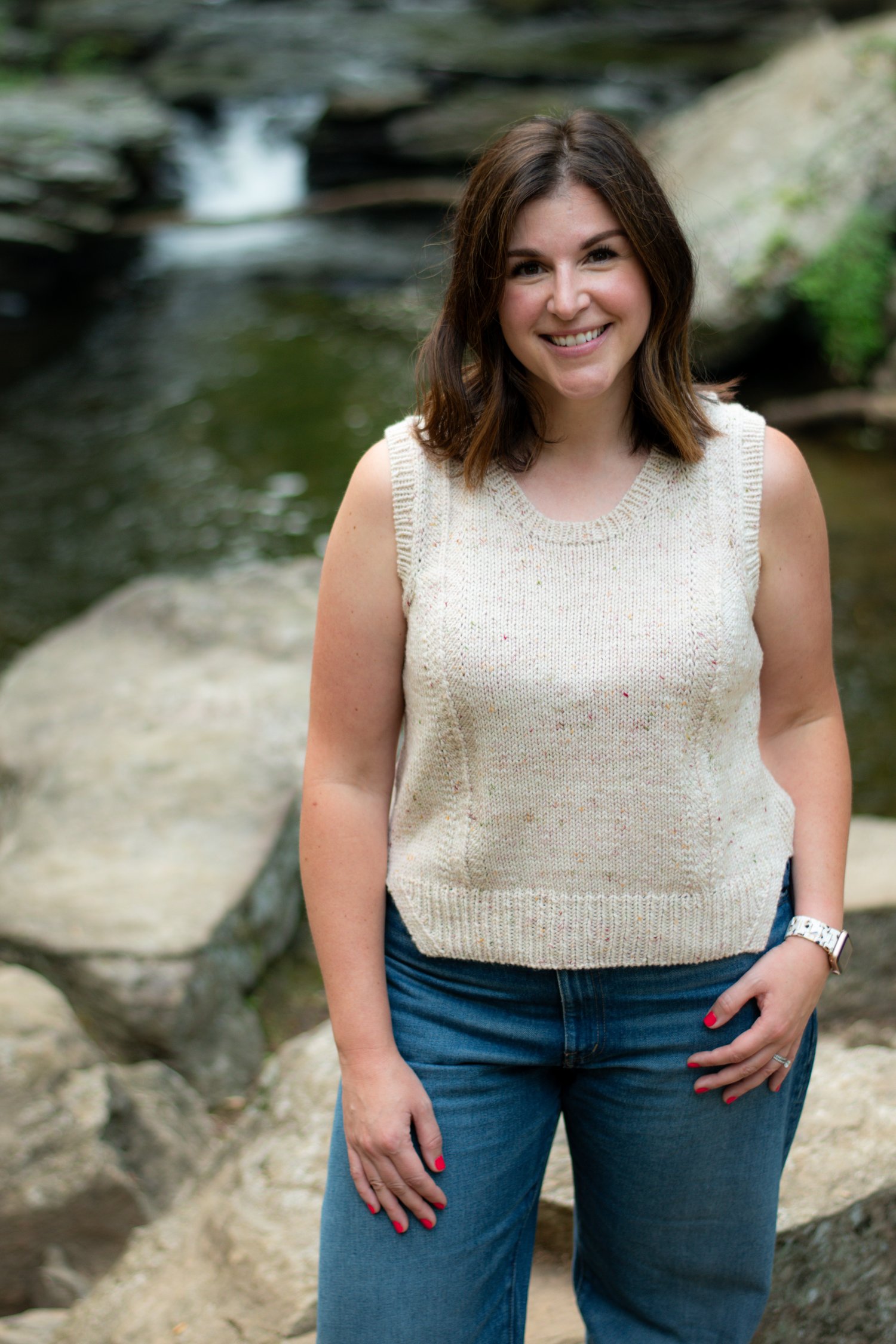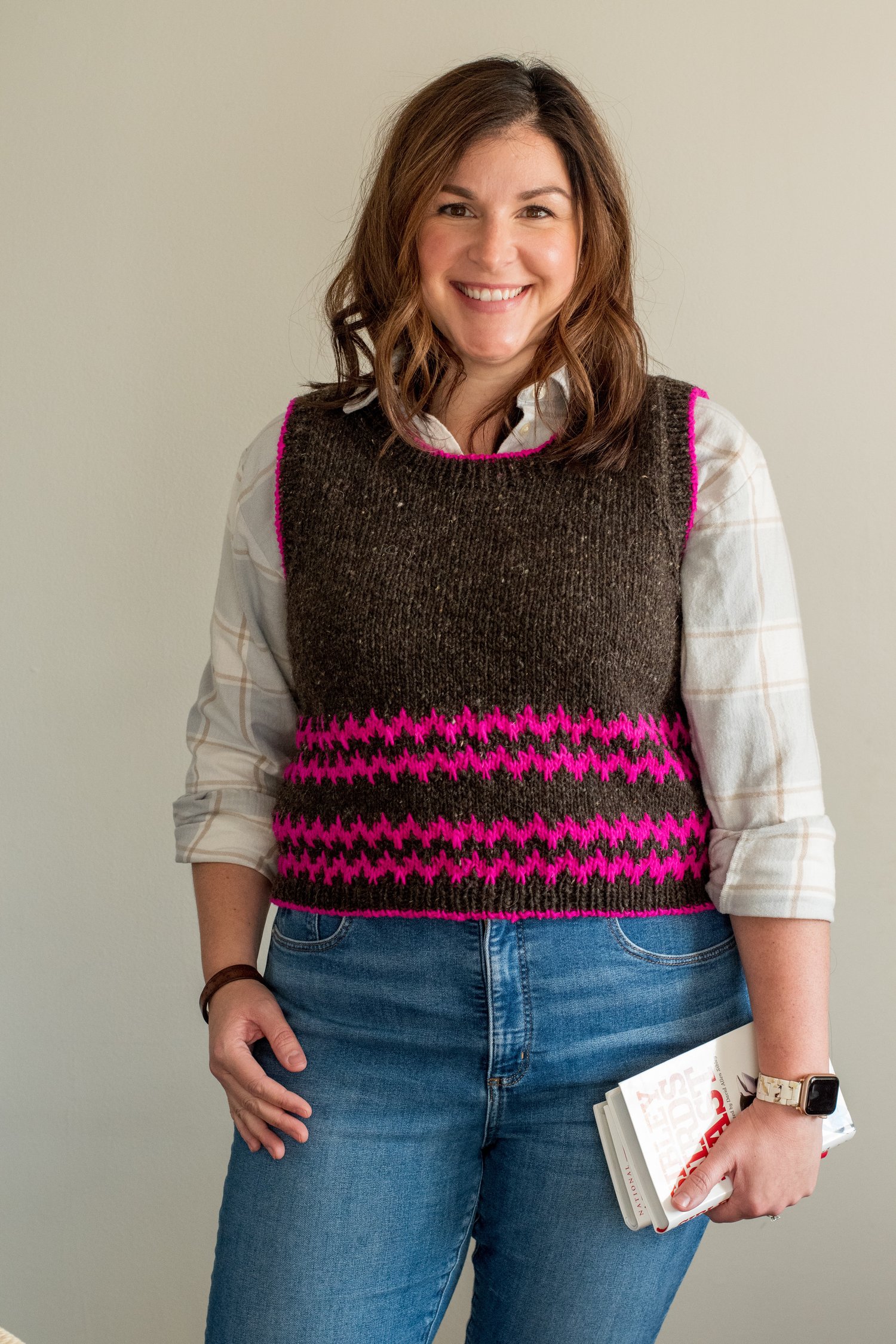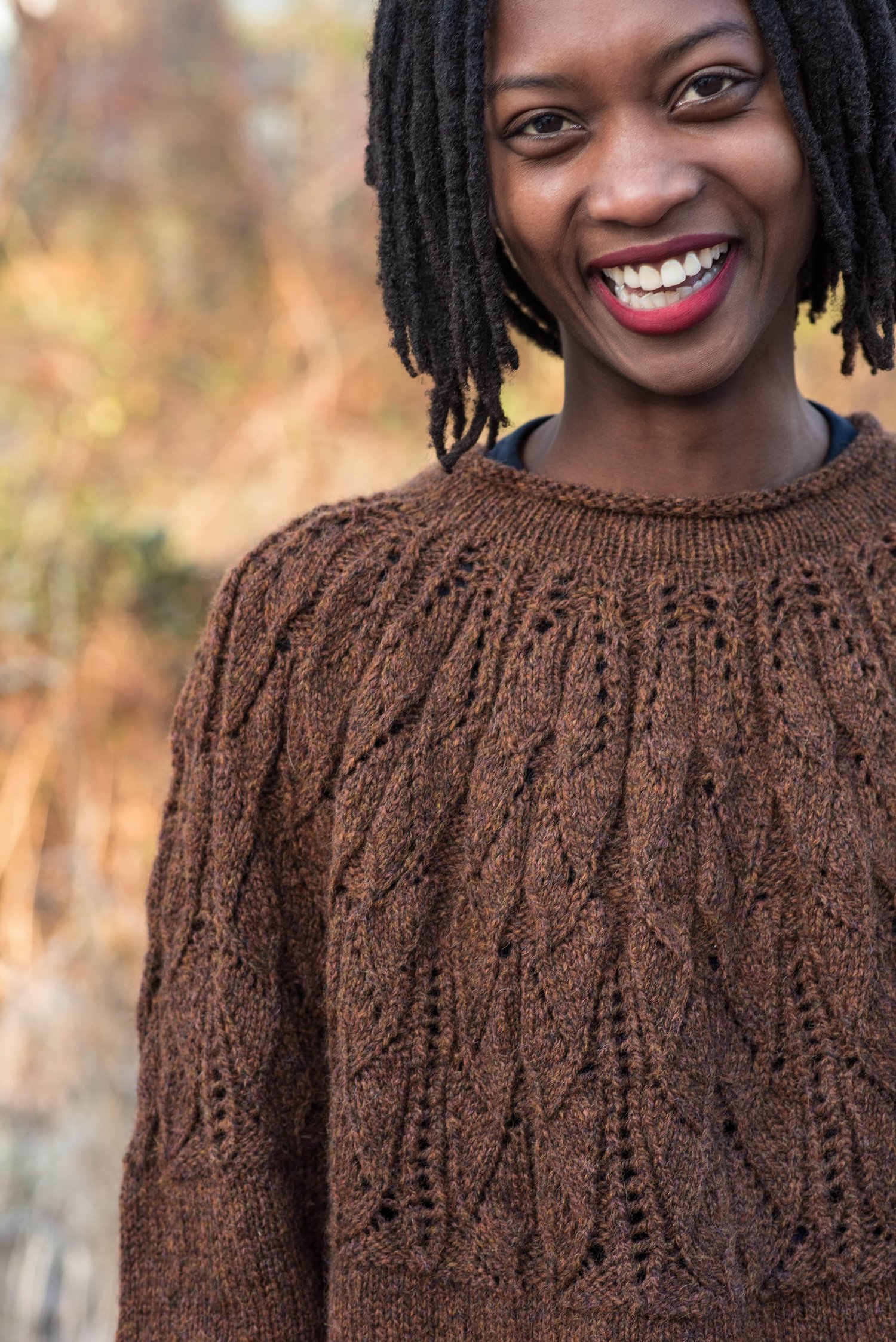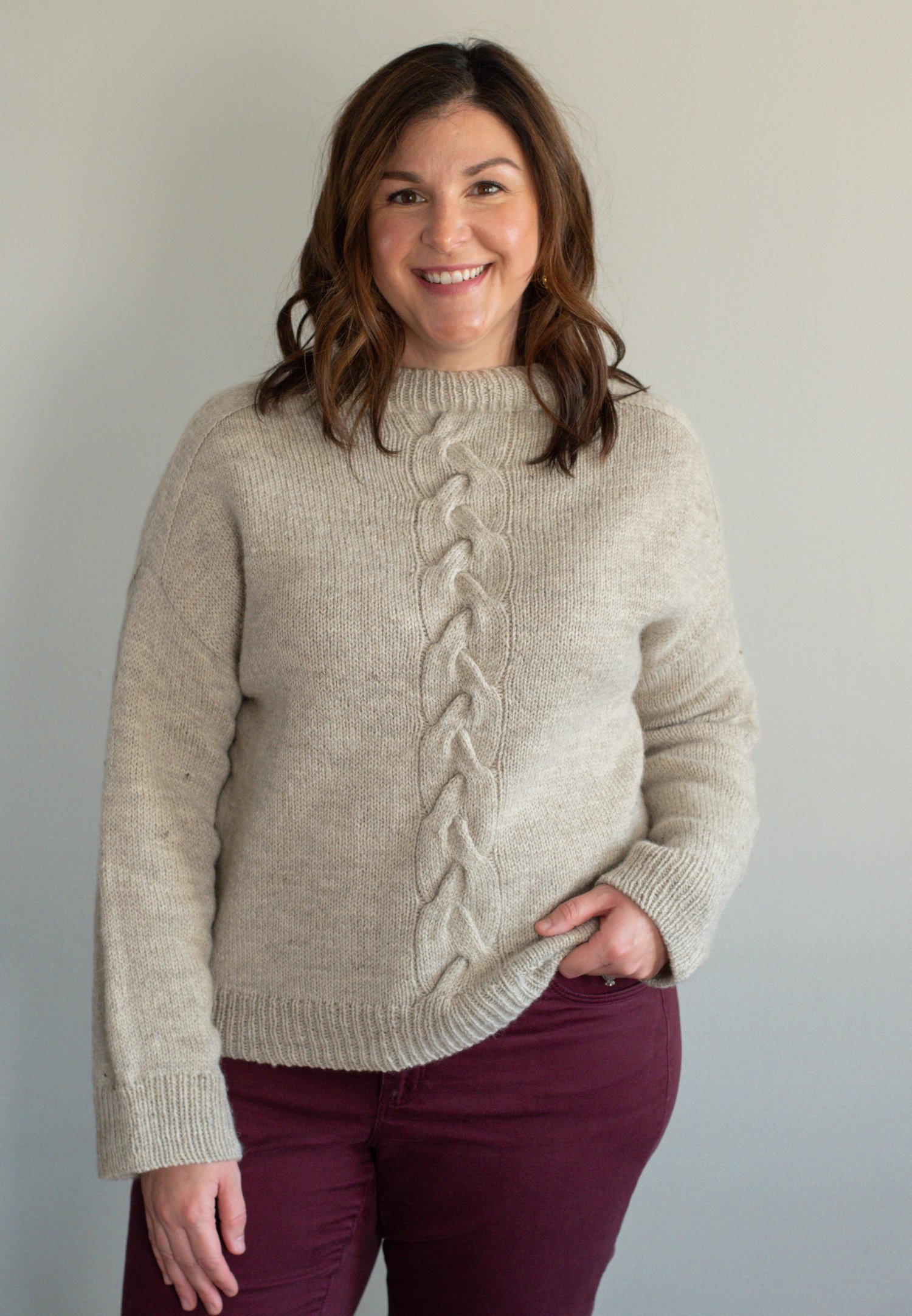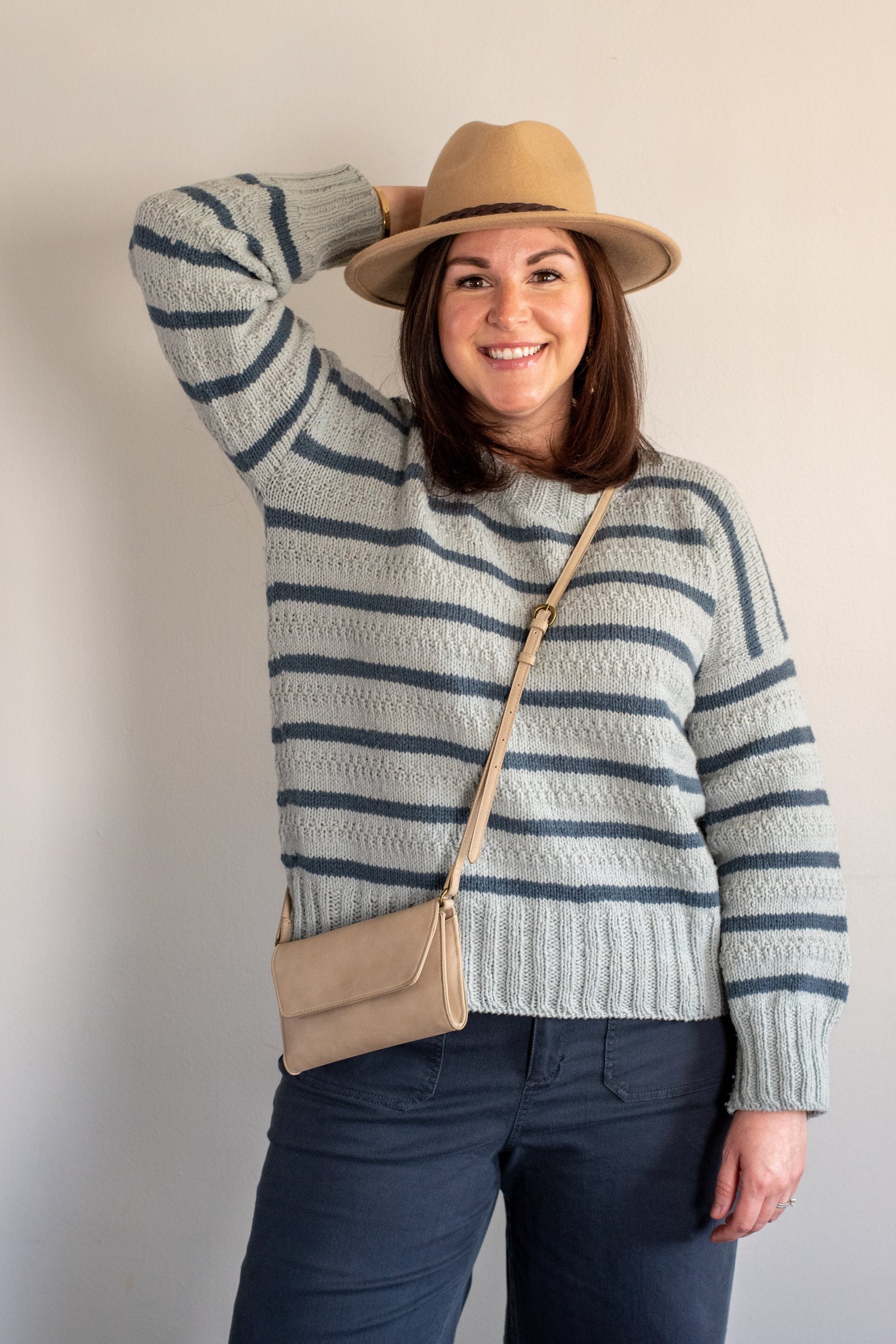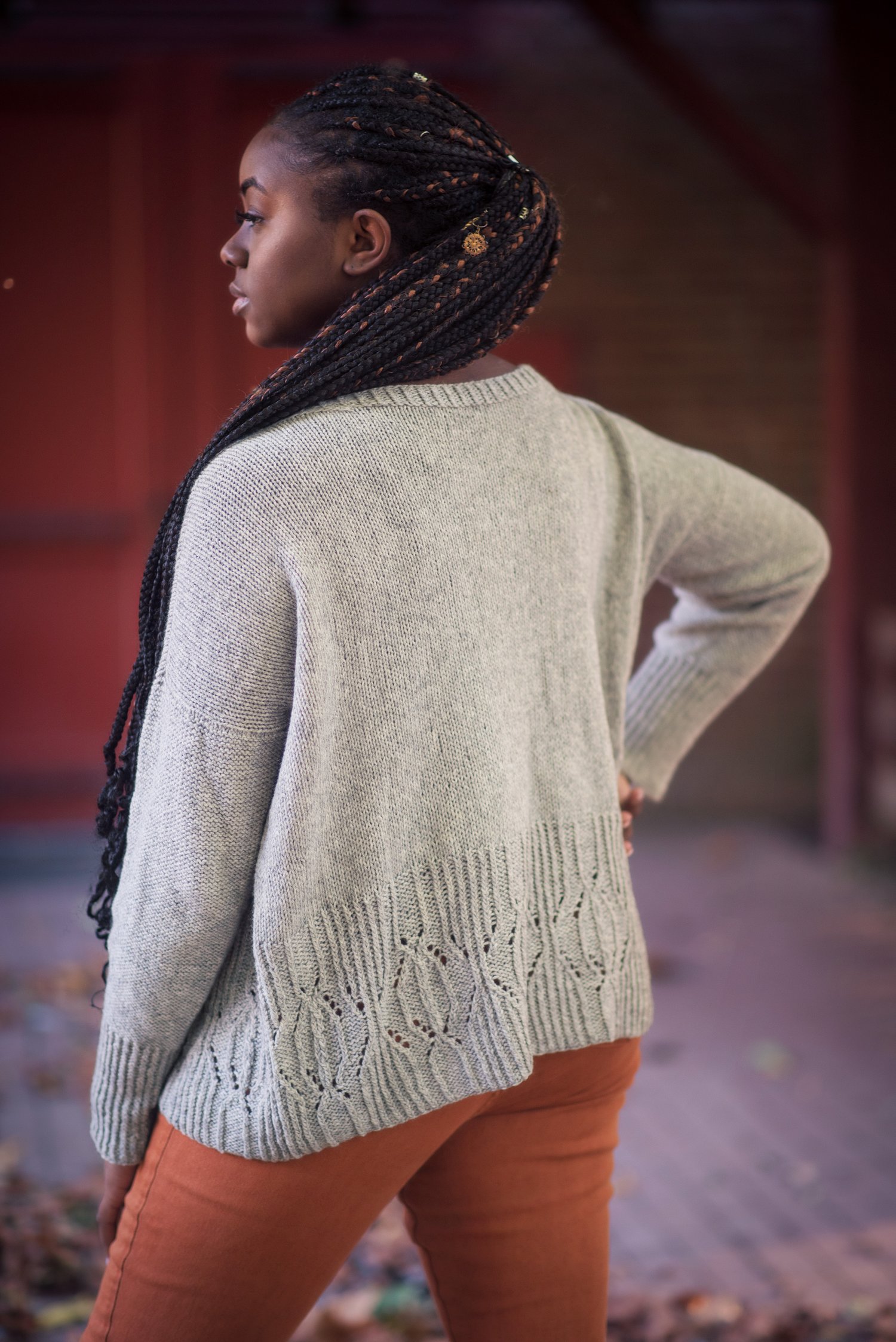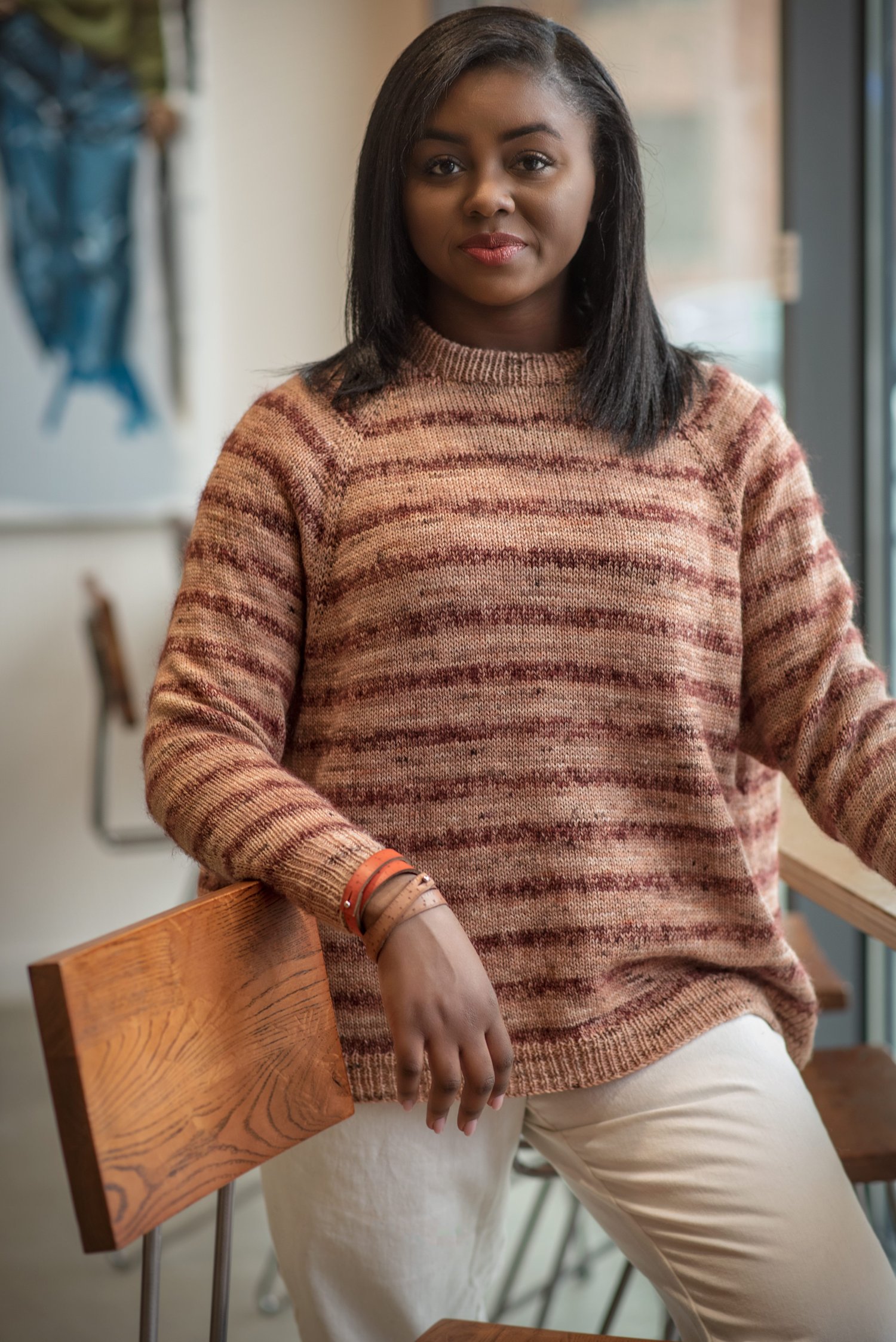Night Lines
Construction
Night Lines is a drop shoulder sweater worked from the top down with European shoulder construction and a relaxed funnel neck. The back neck is cast on and shoulder shaping rows are worked before continuing to work flat to the arm opening depth. Left and right front shoulders are picked up and worked flat with shaping for the neckline. Fronts and back are joined to work the body in the round. Sleeves are worked straight and gathered before the cuff. The sweater features a colorwork motif on the body and sleeves. Hem, cuffs and neckline are finished with a 2x2 rib trim.
Finished Chest Circumference
1 (2, 3, 4) 5, 6, 7 {8, 9}
32 (36, 40, 44) 48, 52, 56 {60, 64}“
81.5 (91.5, 101.5, 112) 122, 132, 142 {152.5, 162.5} cm
Selecting a Size
Night Lines is intended to be worn with 4–8” / 10–20.5 cm of positive ease. Select a size 4–8” / 10–20.5 cm larger than your chest circumference. Measurements below are for the finished garment after blocking. Samantha wears size 4 with 4” / 10 cm of positive ease and is 5’6” / 167.5 cm tall.
Gauge
24 sts and 32 rows = 4” / 10 cm in Stockinette Stitch and Colorwork, worked flat and in the round, using Needle A, after blocking
Yarn
Myak ‘Fior Di Lino’
(50% Tibetan Cloud Wool, 35% Baby Yak, 15% Italian Linen, 218 yds / 200 m per 50 g)
Shown in Main Color: Graphite
4 (4, 5, 6) [6, 7, 7] {8, 9} skeins
Or 855 (940, 1030, 1120) [1245, 1370, 1520] {1670, 1815} yds /
780 (860, 945, 1025) [1140, 1255, 1390] {1530, 1660} m of a similar fingering weight yarn
Shown in Contrast Color: Caffeelate
2 (2, 2, 3) [3, 3, 3] {3, 4} skeins
Or 325 (370, 410, 455) [505, 535, 560] {645, 755} yds /
300 (340, 375, 420) [465, 490, 515] {590, 690} m of a similar fingering weight yarn
Yardage is listed for a body length worked to 11.5 (11.5, 11.25, 10.75) 10.75, 10.75, 10.5 {10.5, 10.5}“ / 29 (29, 28.5, 27.5) 27.5, 27.5, 26.5 {26.5, 26.5} cm from underarm to hem with an additional hem length of 3” / 7.5 cm. Additional yardage required if lengthening body and/or sleeves.
Needles
Needle A (Main Fabric)
One 24” / 60 cm circular needle or longer, US 3 / 3.25 mm or size needed to get gauge
Needle B (Hem Ribbing)
One 24” / 60 cm circular needle or longer, US 2 / 2.75 mm or one size smaller than gauge-size needle
Needle C (Neckband)
One 16” / 40 cm circular needle, US 2 / 2.75 mm or one size smaller than gauge-size needle
Needle D (Neckband)
One 16” / 40 cm circular needle, US 1 / 2.25 mm or two sizes smaller than gauge-size needle
Needle E (Sleeve)
One 40” / 100 cm circular needle for magic loop or DPNs, US 4 / 3.5 mm or one size larger than gauge-size needle
Needle F (Cuff)
One 40” / 100 cm circular needle for magic loop or DPNs, US 2 / 2.75 mm or one size smaller than gauge-size needle
Notions
1 unique BOR marker, removable stitch markers, spare needles or waste yarn, tapestry needle
Techniques
Long-Tail cast on, colorwork (knit flat and in the round), picking up stitches, backwards loop cast on, tubular bind off
Notes
The European shoulder construction will place the shoulder seam toward the back, below one’s shoulder apex. The back armhole length is shorter than the front armhole length.
Depending upon bust size, the sweater’s front hem may rise slightly higher than the back hem when worn after blocking (see photo on pg 9). The pattern does not include bust darts but you wish to add them to the
pattern, work them within the solid-color sections of the Body Colorwork Chart either at or just after the apex of the full bust. Depending upon the length to be added, you may wish to split the length between two or more
adjacent solid-color sections. Alternatively, add length to your sweater’s front by working short rows before
beginning the hem.
I highly recommend swatching in both single-color and stranded colorwork to see if you require a larger needle size for the pattern’s colorwork rounds, as it is not uncommon for one’s stranded gauge to be tighter than one’s single-color gauge.
For the sample, I went up a needle size to work the sleeves. You may or may not need to make this adjustment in needle size when working the pattern over a smaller circumference.
For the upper body to fit as intended, it’s important to achieve row gauge with your selected yarn.

